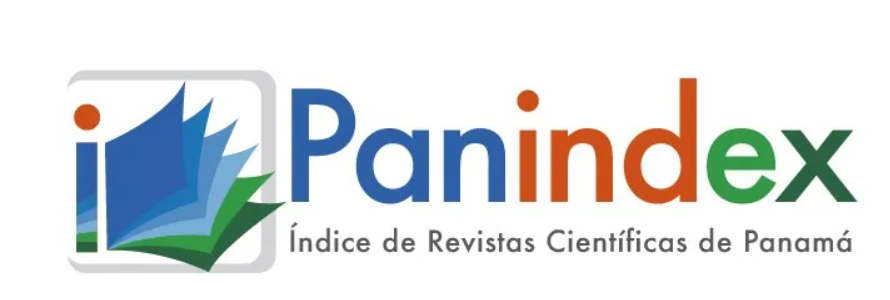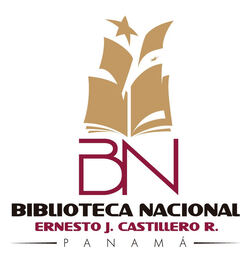The content of the publications and the links suggested in them are the sole responsibility of the authors and not of the Metropolitan University of Education, Science and Technology (UMECIT) or of the journal ORATORES. They are protected by international copyright laws as well as the logos of UMECIT AND ORATORES, hence their reproduction is totally prohibited.
This work is licensed under a Creative Commons Attribution-NonCommercial-NoDerivatives 4.0 International License.
The authors maintain the copyright and transfer the right of the first publication to the journal, with the article registered with Creative Commons Attribution-NonCommercial-NoDerivatives License, which allow others They can download the works published in this magazine and share them with other people, as long as their authorship is recognized, but they cannot be changed in any way nor can they be used commercially.
Authors are recommended to include their work in social networks such as Researchgate and institutional repositories once the article or visible fact has been published on the journal page, without forgetting to include the digital document identifier and the name of the journal.



Abstract
The objective of the article is to determine the organizational climate in the school institutions of Santa Marta Colombia, under the theoretical foundations of authors, such as: Brunet (2008), Robbins and Coulter (2010), Chiavenato, (2006), Daft and Marcic, (2006), Goncalves (2007) among others. The research was descriptive with field design, transectional and non-experimental. The population consisted of six primary public basic educational units located in the city of Santa Marta. The reporting units were 6 rectors and 83 teachers. Two instruments of data collection, type scale type Lickert, were designed. The instruments were subjected to validity and reliability through the Cronbach’s Alpha method, obtaining a reliability for the instrument addressed to the rectors of 0.964 and 0.902 for the teachers. The alternative sometimes exhibits the highest percentage for the group of rectors; while for teachers the most answers were oriented towards the alternative almost always. It is pointed out that the organizational climate was in a moderately appropriate range, but at the lower end (3.62).
Keywords
References
Bohlander, G, Snell S. (2008). Administración de recursos humanos. México. Editorial CenegeLearning Latino América.
Chiavenato, I. (2002). Administración, Teoría Procesos y Práctica. 3a Ed. México. Editorial Mc Graw Hill.
Chiavenato, I. (2006). Introducción a la Teoría General de la Administración. 7ª Edicion. México. Editorial Mc Graw Hill.
Chiavenato, I. (2011). Administración de Recursos Humanos. El Capital Humano de las organizaciones. México. Editorial Mc Graw Hill.
Daft, R. y Marcic, D. (2006). Introducción a la Administración. Cuarta Edición. México. Editorial Thomson.
Davis K. y Newstrom J. (2004), Comportamiento Humano en el Trabajo. 10ma. Edición). México. Editorial Thomson
Funes L. S. (2000). Resolución de conflictos en la escuela: Una herramienta para la cultura de la paz y la convivencia. En Revista Contextos Educativos. Vol 3. Pp 91-106. Universidad de la Rioja, España.
García, M. (2009). Clima Organizacional y su Diagnóstico: Una aproximación Conceptual. En Revista Cuadernos de Administración Vol. 25, N°. 42. Julio-Diciembre. Universidad del Valle, Cali, Colombia. Disponible en: http://www.redalyc.org/articulo.oa?id=225014900004
Gibson, J.; Ivancevich, J.; Donnelly, J. (2006). Organizaciones. Duodécima Edición. México.
Gómez R. C. A (2004). Diseño, construcción y validación de un instrumento que evalúa clima organizacional en empresas colombianas, desde la teoría de respuesta al ITEM. Acta Colombiana de Psicología, núm. 11, pp. 97-113 Universidad Católica de Colombia Bogotá, Colombia . Disponible en: http://www.redalyc.org/articulo.oa?id=79801108. Fecha de consulta 23/05/2017
Goncalves, A.. (2007). Dimensiones del clima organizacional. Sociedad Latinoamericana para el aprendizaje. Disponible en: http://www.educadormarista.com/proyectoaprender/climaoganizacional.htmtiva Consultado: mayo 2017
Hitt, M.; Black, S. y Porter, L. (2006). Administración. Novena edición. México. Pearson Educación.
Jones, G. y George, J. (2006). Administración Contemporánea. México. Editorial McGraw-Hill.
Koontz, H, Weihrich, H. y Cannice, M. (2012). Administración una perspectiva global y empresarial. Edición 14. México. McGraw-Hill, Interamericana. Editores.
Litwin, G.. y Stinger, R. (1968). The influence of organizational climate on human motivation. Michigan: Foundation for Research on Human Behavior, nd.
Ojeda, J. (2014).Clima organizacional en instituciones de educación primaria. Revista CICAG Vol. 11 N°2. http://publicaciones.urbe.edu/index.php/cicag/issue/view/304
Olaz Á. (2010). Propuesta de un modelo de medición multivariable del clima laboral en organizaciones complejas. Un enfoque metodológico Departamento de Sociología y Política Social Facultad de Economía y Empresa. Universidad de Murcia
Ortiz P., Olaz A. y Carrasco, A. (2009) Clima y cultura en la empresa familiar, en J. Monreal, G. Sánchez, A. Meroño y R. Sabater (coords.), La Gestión de las Empresas Familiares, Madrid, Thomson Reuters, pp. 379-394.
Tapia, J. (2007). Introducción al Análisis de Datos con SPSS para Windows. Venezuela. Ediciones Universidad Ezequiel Zamora.
UNESCO (2009). Tras la pista de una revolución académica: Informe sobre las tendencias actuales para la Conferencia Mundial sobre la Educación Superior. Francia. Recuperado de http://unesdoc.unesco.org.
Vega, D., Arévalo A., Sandoval J., Aguilar M., y Giraldo J. (2006) Panorama sobre los estudios de clima organizacional en Bogotá, Colombia (1994–2005). Revista Diversitas – Perspectivas en Psicología - Vol. 2, No. 2, Págs. 329 –349.
Downloads
Publication Facts
Reviewer profiles N/A
Author statements
- Academic society
- Universidad Metropolitana de Educación, Ciencia y Tecnología
- Publisher
- Universidad Metropolitana de Educación, Ciencia y Tecnología



















